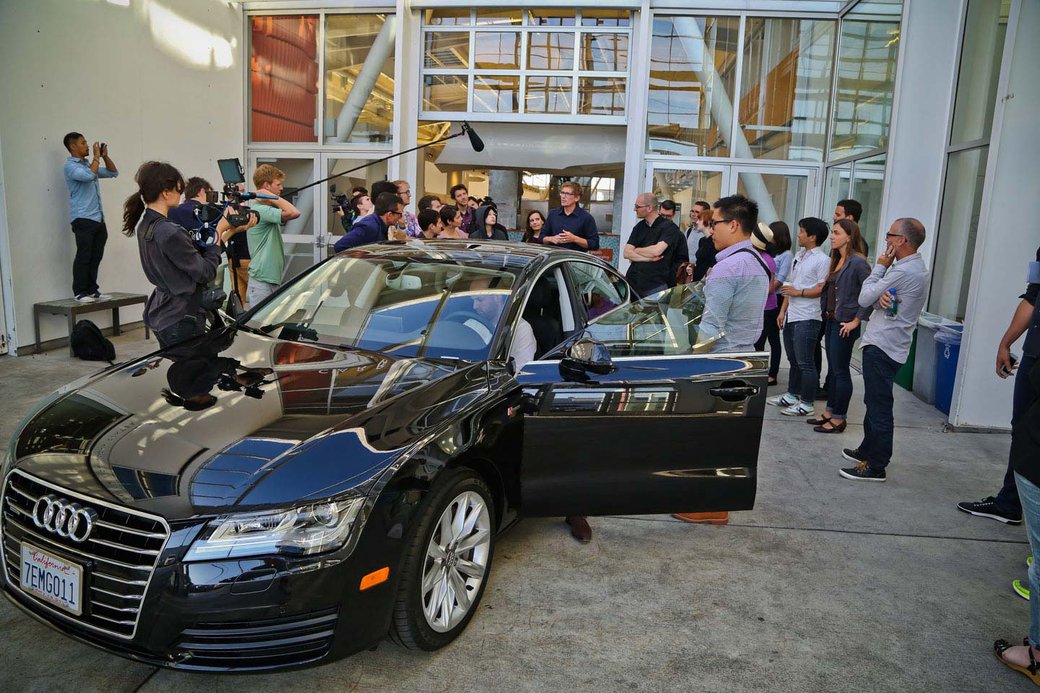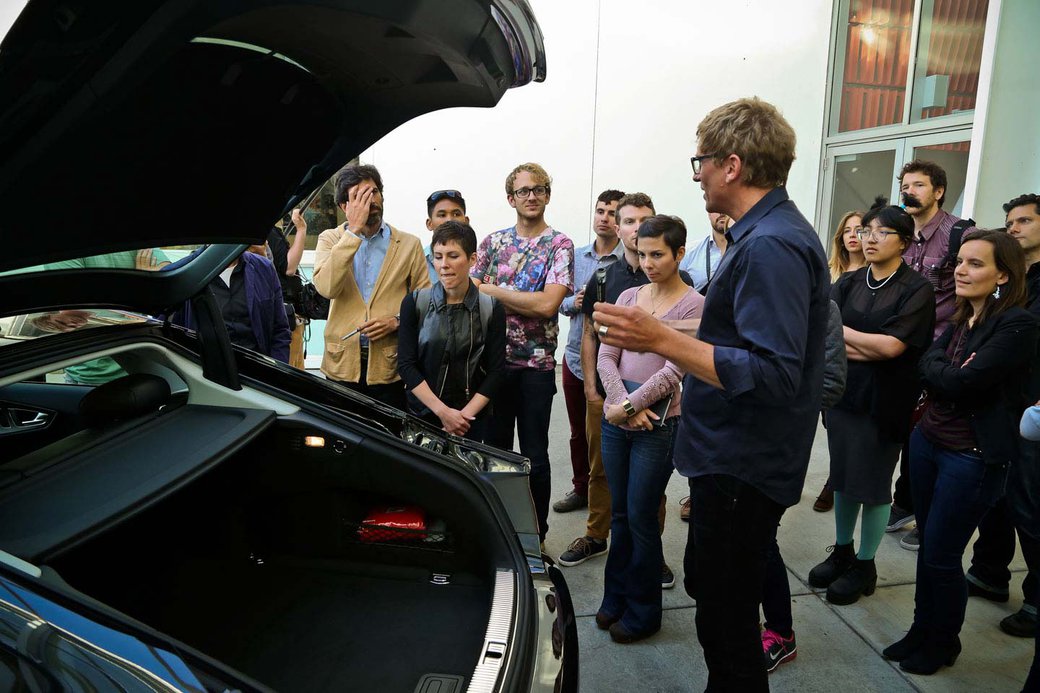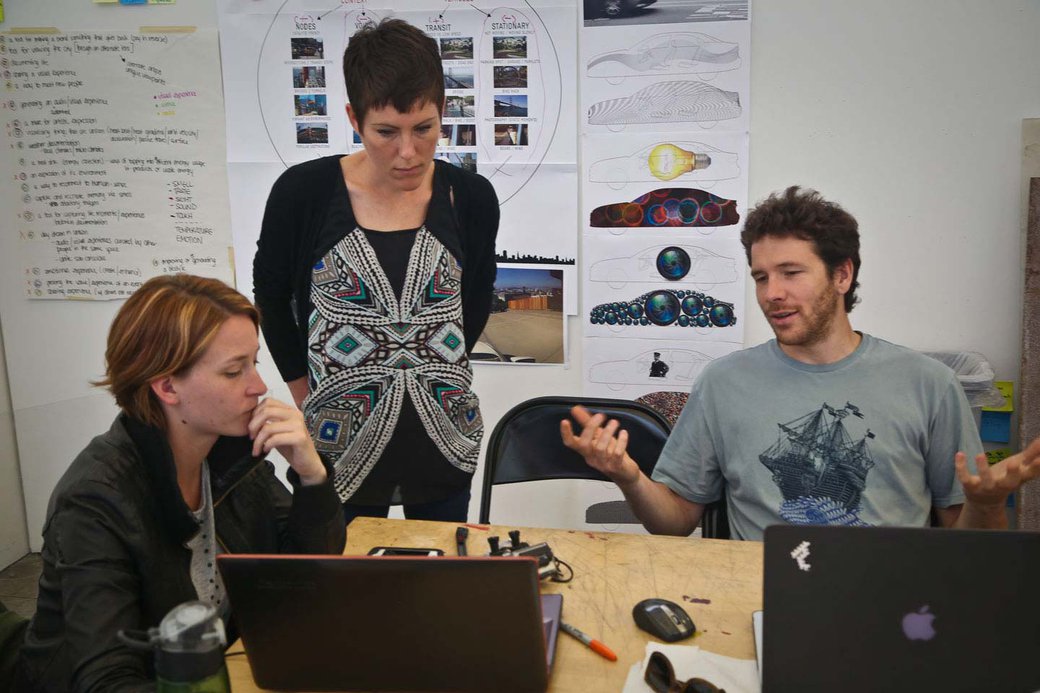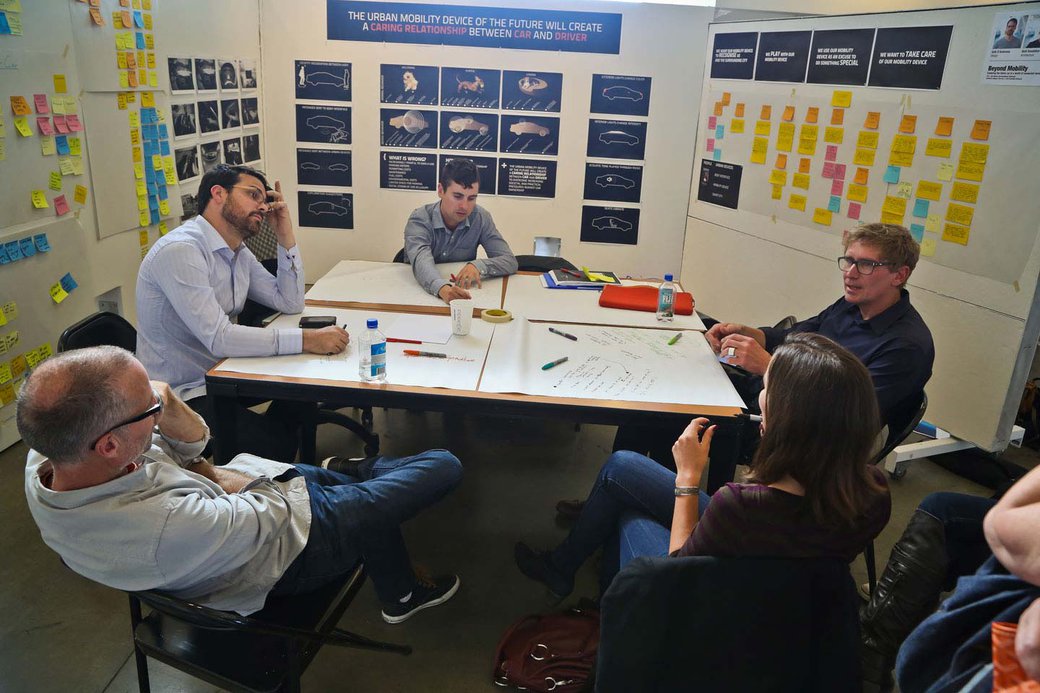CCA students drive Audi design challenge with innovation and creativity

In June CCA students from across multiple disciplines participated in CCA+AIR (Audi Innovation Research) Fellowship: Beyond Mobility, an intensive two-week design challenge that brought the Audi Group's leading designers -- and a host of other local designers -- to campus to hear students present about the next phase of creating luxury automobiles.
Architecture faculty members and FUTUREFORMS partners Nataly Gattegno and Jason Kelly Johnson and Markus Auerbach from Audi AG’s AIR team spearheaded the event, which called for an interdisciplinary cross-section of program chairs to nominate students, who would then apply for the fellowship.

Auerbach emphasized daily a basic principle to which all Audi designers rely: “Humans have basic needs and rich desires.”
Students worked in teams and were instructed to keep the fundamental design consideration in mind as they envisioned the design of future automobiles for Audi AG, one of the "German Big 3" luxury automakers (along with BMW and Mercedes-Benz, which are the three best-selling luxury automakers in the world).
CCA’s Noah’s Ark
“We jokingly referred to it as 'CCA's Noah's Ark,'” said Gattegno, who chairs CCA’s Graduate Program in Architecture.
“Fifteen students from a number of disciplines were selected: Graduate Design, Architecture, Interaction Design, Design MBA, Fashion Design, Interior Design, Industrial Design were all represented with student interests ranging from graphic design to deployable textiles to 3D printing environments and branding.
“The result was an elite group of CCA students and faculty with expertise in cutting-edge architecture, technology, interaction, and the design of environments collaborating to produce proposals for the future of urban mobility.”
Experts Team Up
Once the group was set, the work began. The two weeks kicked off with introductions, a Pecha Kucha, and brainstorming before breaking off into teams. Johnson and Interaction Design faculty member Haakon Faste taught the workshop alongside the Audi AIR team, while local experts, including some CCA faculty, also participated.
Students benefitted and gained practical advice and feedback from Nick Cronan, founder and creative director of Branch Creative; David Peschel, executive creative director of Speck Design; Jason Wilson, lead product designer at Pinterest; Henriette Cramer, research scientist at Yahoo! Labs; and Hugo Giralt and Siddarth Vanchinathan of Propelland among others.
“One of the things the students have said,” added Johnson, “is that it was a great experience because they were at the same level as all the people on the table. They were equal participants in the conversation, which was empowering and a great way to instill confidence to push the boundaries.”
Designing the Future of the Car
One of the biggest points driven into students is the fact it typically takes six to seven years to design and build a car. Allowing students jumpstart that process made having an Audi AG / CCA team a mutually beneficial learning experience.
“When a car is launched,” says Johnson, “the next generation begins to design for a launch in seven years. Our CCA students are those customers. Seven years down the line, they will be the ones shopping for cars and expecting certain qualities, aspects, and features.
“It was great for Audi to get ideas from people who are much younger than the people actually designing at Audi -- people who are tapped into technology in a very different way and have a very different set of expectations from their technology, their cars, and their environment.”

Igniting the Process
The students were instructed to dream big, but to also remember that this was to be a real car -- something they’d see on the market within a decade.
Students were instructed to focus beyond the mere appearance of the car; they were to consider user experiences, literal and emotional connectivity, and what kinds of content consumers expected in a new luxury vehicle. Naturally, imaginations took off.
Johnson added: “Audi was interested in taking it beyond the car. Mostly ideas about future influences that could and should become part of the car 'ecosystem'. Experts came in from multiple fields, so the fellows received inputs from a number of diverse perspectives -- ideation, branding, and business strategy to interaction design, user experience, urban planning, and architecture.
“The conversations spanned disciplinary fields and interconnected territories that are usually siloed.”
Collaboration with local experts in addition to the Audi team provided students with assistance in laying out the proper foundation for their big ideas, while they also received meaningful feedback to keep Audi branding in mind.
“We got to go deep on the Audi brand, with so many stories and thoughts and passions shared by Marcus and the Audi innovation and marketing team,” explained Faste. “The Audi team was immensely knowledgeable, open to our craziness, and provided concrete guidance when necessary to reign us back in.”
Two-Week Race, Everyone Wins
Using the Nave as an enormous classroom, Audi AG and the fellows took it over for two intense weeks. Each day, new ideas, posters, and diagrams populated the walls along with countless Post-its, each with scribbled feedback.
During the first week, a new, shiny red convertible Audi R8 was parked outside A2 Café in the Nave courtyard to provide a constant visual reminder of what brainstorming sessions like these could achieve. (The following week was an equally impressive black hardtop version.)
“It was a great convergence of perspectives and disciplines around a tightly constrained design space,” said Faste. “Cars are really hard, and the future of a classic racecar brand in an eco-world of noncar drivers was particularly challenging.
“Fortunately, the great thing about design is that the more constrained the problem, the more interesting, creative, and diverse the solutions that result.
“We pushed hard and came up with some quite unexpected ideas.”
Presentation Is Everything
After two weeks, CCA’s Campus Center Student Lounge was the showcase for a variety of inspired final student presentations. Using videos, prototypes, and CGI diagrams, the highly researched and elaborate proposals were delivered to Audi, participating faculty, and other mentors.
Many of the concepts focused on user experience and interaction.
One group proposed an “urban tribal network” that would link driver communities to each other and Audi to build brand loyalty and provide the company with pervasive innovation insight that’s on the pulse of emerging trends.
Another group hypothesized a pet-like relationship with the car could foster constant learning and loyalty between driver and car.
Others considered interactive windshields that could superimpose GPS directions in front of the driver and adjustable ambiances that would recreate sunlight on a cloudy day or other atmospheric projections.

Innovation Leads to Meaningful Change
While the design proposals from the collaborations have yet to be made public, the experience is immeasurable for the students and Audi alike.
“Art happens when we aspire to do things for the sake of doing them well,” explained Faste. “To make art that matters, an expansive view, strong values, and diversity of perspectives is required.
“By providing a plurality of perspectives and abundance of enthusiasm for a better future, the workshop helped to reframe the somewhat intractable near-term challenge of urban mobility.
“Most importantly, it taught a small but influential group of interdisciplinary students the value of collaborative research, tangible making, unlimited dreaming, and a sense of purpose, which they will continue to apply in their future work.
“I can think of no better way for meaningful change to happen.”